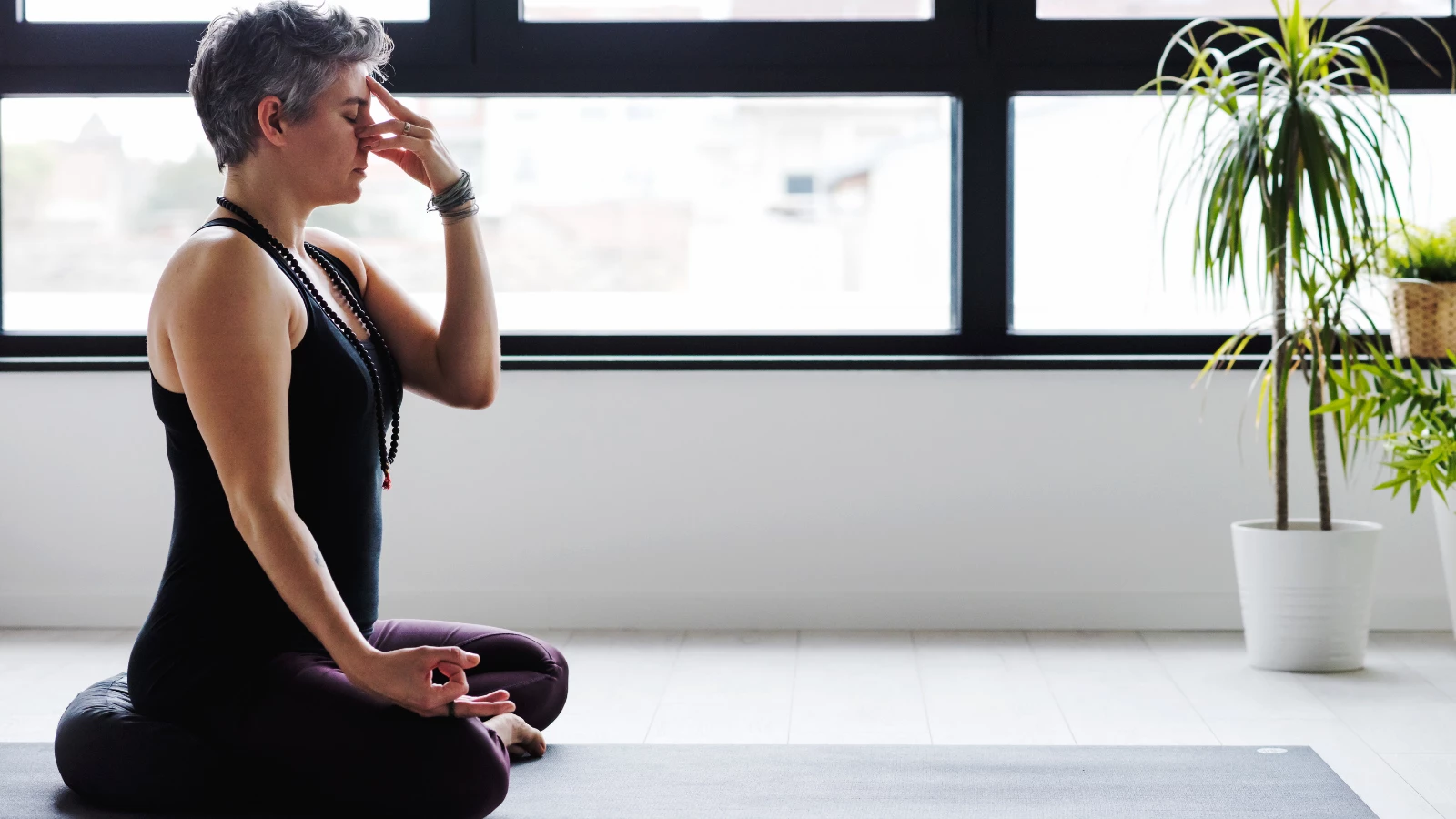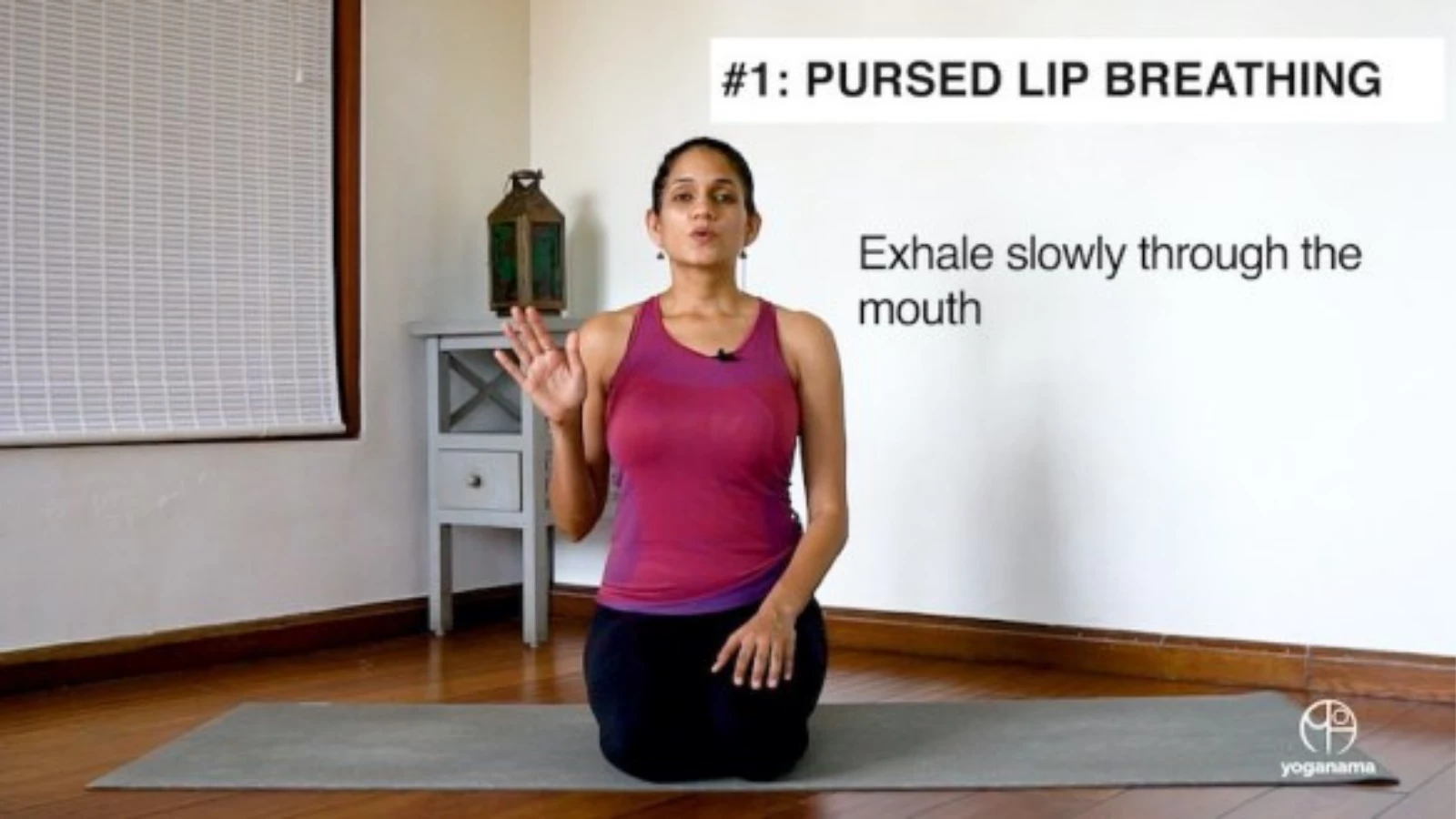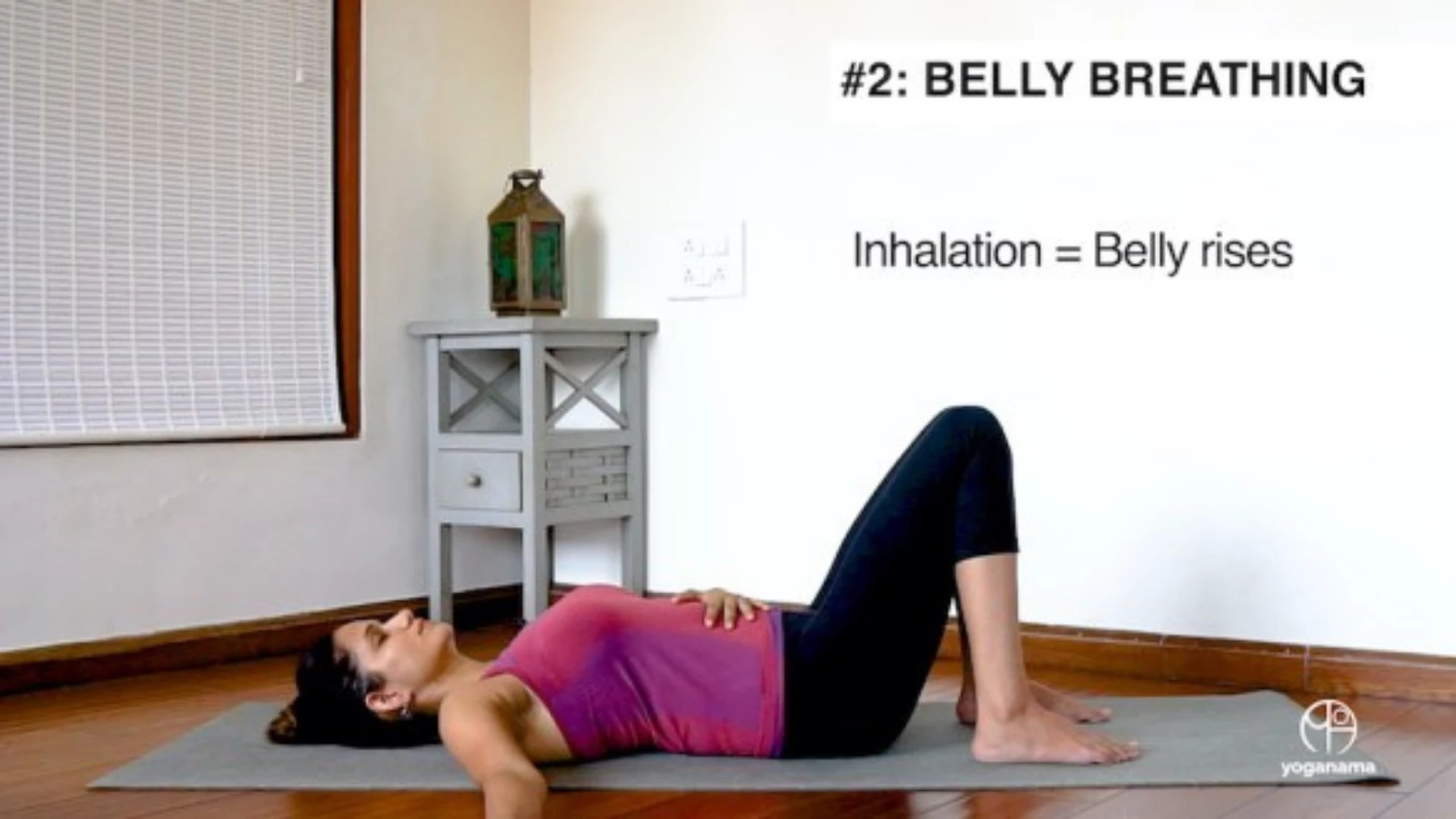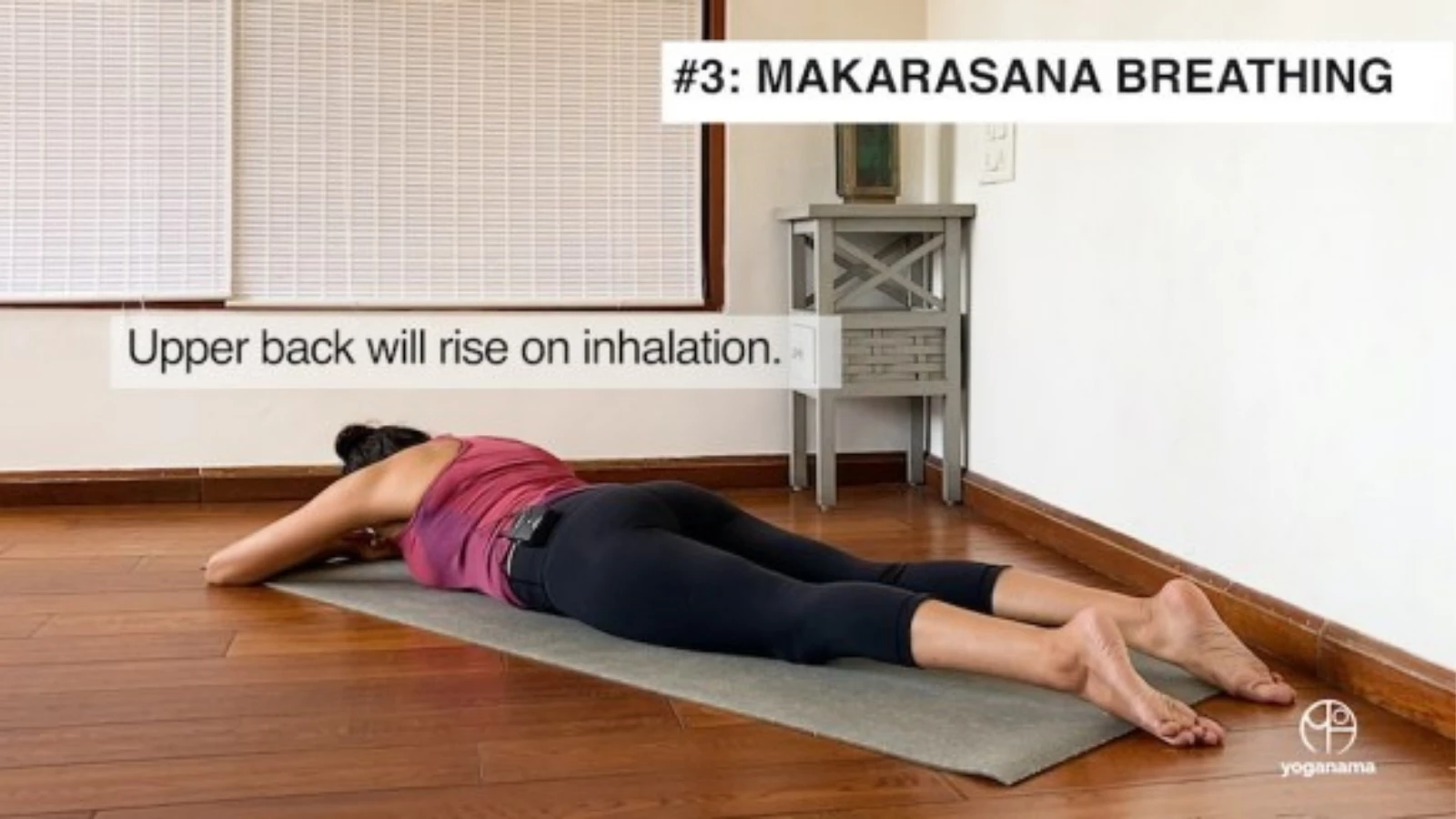Yogic Breathing for Better Lung Capacity

Yogic breathing exercises are a very effective way to keep the lungs healthy and improve our breathing capacity. Regularly practicing deep breathing is great for our overall physical and mental health.
How Do Your Lungs Work?
Every cell in our body needs oxygen to function optimally. The air we take in when we breathe provides this oxygen, and the oxygen exchange happens in our lungs. Our lung capacity is six liters, though we only breathe in about half a liter of air in every breath. When breathing mindfully we can take this up to three liters.
Breathing capacity starts declining at age 35. It happens for multiple reasons, including losing bone density, which makes the ribcage smaller, limiting lung expansion. Even our diaphragm (the muscle that helps us breathe) gets weaker with age, reducing how much air we can take in when we inhale. That is another reason why breathing or recovering from respiratory infections becomes more difficult as we age.
How to Optimize Your Lungs with Yogic Breathing
We can minimize damage to our lungs and keep them in optimum working condition by staying active and doing yogic breathing exercises. Regular aerobic activity keeps them functioning efficiently. Strength training helps improve our posture and trains the muscles that help us breathe correctly. And breathing exercises help remove stale air from the lungs and increase our breathing capacity. The good part about breathing exercises is that anyone can do them, anywhere. They are the most accessible and simplest way to work on strengthening our lungs.
There are three yogic breathing exercises that are simple, highly effective, and are accessible to anyone. Here’s a quick video that explains these three exercises in detail.
1. Pursed-Lip Yogic Breathing Exercise

- Sit in a comfortable position with your spine upright.
- Take a deep breath in through the nose, keeping your mouth closed.
- Exhale slowly through the mouth keeping your lips pursed.
- Make the exhalation slow and draw out the breath gradually.
- Continue for 3 to 5 minutes.
This is a simple technique that helps improve overall lung capacity and slows down our breathing. If we take fewer breaths per minute then our body gets more time to absorb oxygen which allows us to be more active.
2. Belly Breathing Exercise or Diaphragmatic Breathing

- Lie down on a flat surface with your knees bent.
- Keep one hand on your belly and another on your chest.
- Breathe deeply into the belly so that the hand on your belly rises more than the hand on the chest.
- Exhale slowly allowing the belly to settle back.
- Repeat for 3 to 5 minutes.
This exercise allows us to breathe more deeply by pulling air into the lowest lobes of the lungs. This habit eventually results in increased breathing capacity. It also allows us to remove stale air from the lungs, which frees up space and allows more fresh air to come in.
3. Crocodile Pose (Makarasana) Yogic Breathing Exercise

- Lie down face down on the floor.
- Stack one palm on top of the other and rest your forehead on top.
- Point your toes straight back and relax your body.
- Draw your breath into the back of the lungs around your middle and upper back.
- Exhale and relax your body into the floor.
- Repeat for 3 to 5 minutes.
This is yet another very effective technique to increase our overall breathing capacity by activating a very large surface area of our lungs at the back. The more we learn to engage different parts of the lungs, the greater our breathing capacity, and the more oxygen we can absorb with every breath.
How and Where to Practice Breathing Exercises
You can practice the above exercises any time, as long as you’re relaxed and have an empty stomach. Just make sure you don’t practice them in crowded spaces. Practice in the privacy of your room, or in well-ventilated areas to avoid picking up pathogens or infections while doing deep breathing.
Breathing exercises are a great way to strengthen the diaphragm and to train the body to engage the lungs to breathe more deeply and efficiently. When practiced regularly they help make the lungs more elastic and active by removing stale air that would’ve accumulated in different corners of the lungs due to inefficient breathing. This can improve our energy levels as each cell in the body gets the oxygen it needs to function. More importantly, the healthier and more efficient our lungs, the better their ability to fight infections.
Also, read...
Warrior I Pose: 5 Strengthening Variations
4 Easy Ways to Use a Sandbag in Yoga Practice
Exercise and Longevity: Diversify Your Yoga Practice for Maximum Benefits
Related courses
Breath as Medicine: Yogic Breathing for Vital Aging
Yoga and Myofascial Release: Releasing Chronic Tension with the Bodymind Ballwork Method

Namita Piparaiya is a Yoga and Ayurveda Lifestyle Specialist and the founder of Yoganama. A former corporate executive, she spent over a decade, from management trainee to business head, with leading MNCs including Citibank, Aviva, and Generali before finding her true calling in Yoga.
As part of her wellness journey, she has completed over 700 hours of Yoga Alliance certified training in Hatha Yoga. She has also studied Pranayama, Ayurveda, Yoga Philosophy, and Indian scriptures from some of the most reputed institutions and teachers in India and abroad. These include courses and workshops across Oxford Centre for Hindu Studies, Cambridge Summer School, eCornell, The Himalayan Institute (USA), David Frawley’s American Institute of Vedic Studies, Chinmaya Mission, India Yoga, Paulie Zink (founder of Yin Yoga), and BNS Iyengar (Mysore). Her approach is, therefore, holistic and unique, bringing together all her experiences to build a strong connection between the body, breath, mind, and one’s inherent constitution and nature.
Namita is acclaimed as one of the leading Yoga influencers in India, with a very engaged and dedicated following across social media platforms. She has been featured and published by India Today, Statesman, The Week, Business World, Elephant Journal, Cosmopolitan, Grazia, and other leading publications in India and abroad.
Namita is an Honours graduate in Mathematics from Delhi University and has an MBA from Symbiosis (SCMHRD), Pune. An avid traveler, she visited 53 cities across 15 countries in 2019, exploring the philosophies, cuisines, and customs of different cultures. She lives in Mumbai, India.



